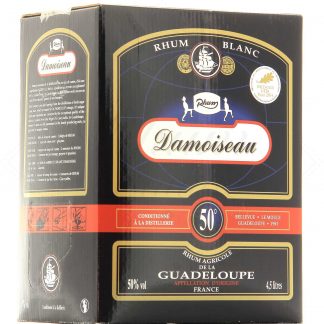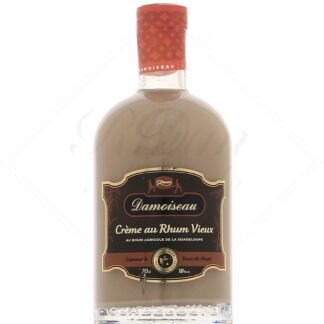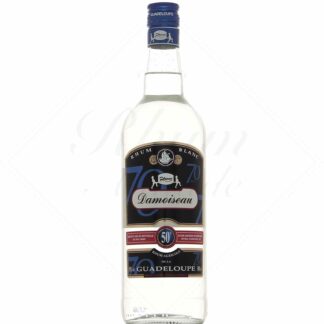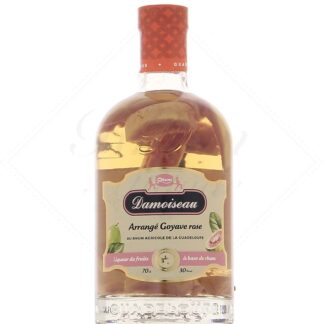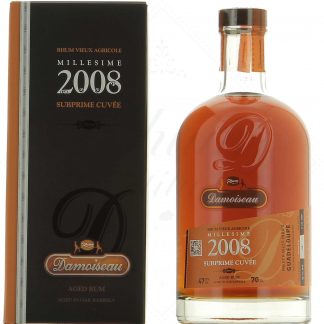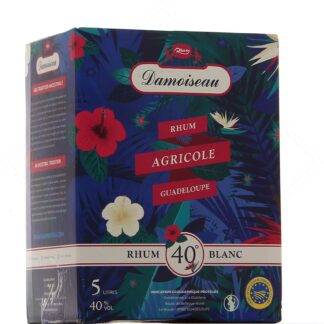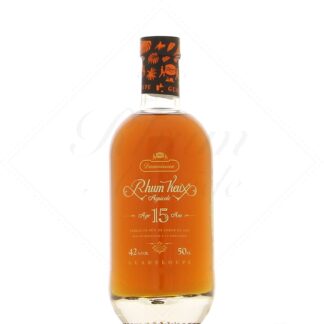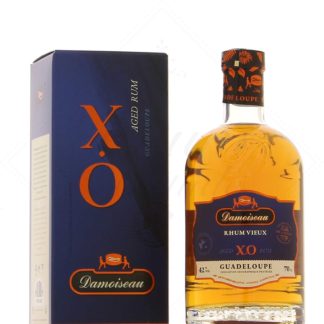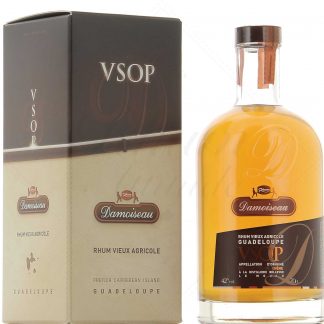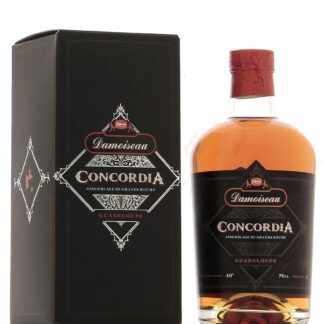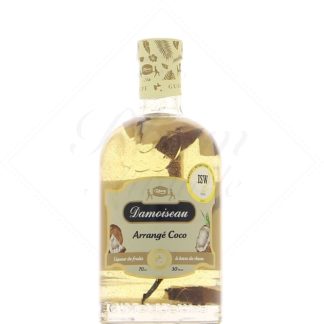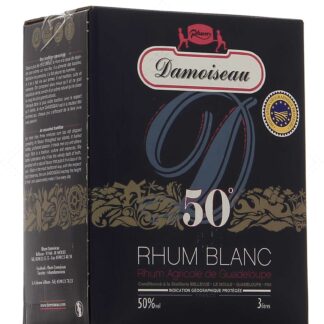Damoiseau

The history of Damoiseau rum
The Damoiseau distillery is part of Habitation Bellevue, located in Le Moule, Guadeloupe. This dwelling was founded at the end of the 19th century by a certain Mr Rimbaud, who had arrived from Martinique. The distillery dates back to 1914, when Bellevue began transforming the molasses from its sugar refinery into rum. In the years that followed, however, the financial health of the distillery was complicated. After several changes of ownership, it was virtually abandoned in the 1920s.
The Damoiseau family arrived in Guadeloupe in 1815, through Louis Laurent Damoiseau. Born in Chartres in 1787, he was a master cutler by profession. A century later, Roger Damoiseau (father) was manager of the Beauport sugar factory in Port-Louis. In 1942, a notary friend told him that the Bellevue house was for sale. He didn't really have the necessary funds, but saw significant potential. He decided to borrow to buy the house.
Over the next decade, Roger Damoiseau multiplied his activities. Sugar cane and rum were the main sources of income, but bananas were also grown, and candies and jams were made. At the time, agricultural rum was only sold in bulk, but the distillery's owner took a seminal decision that marked a turning point in the history of Damoiseau rum. In 1953, the distillery began bottling under its own brand, bypassing the wholesaler and taking its place.
The birth of the Damoiseau brand
In 1968, Roger Damoiseau (son) joined the company. The distillery's success continued to grow spectacularly. Bulk still dominates, but self-bottled rum is becoming increasingly widespread. He gradually ceased other activities, devoting most of his time to rhum agricole.
1978 saw the arrival of the current distiller, Jean-Luc Damoiseau. By 1980, the distillery was in top financial shape, having paid off all its debts. In the meantime, however, it had accumulated a backlog of maintenance and was becoming increasingly dilapidated. The tin fermentation vats leak everywhere, the boiler swallows tons of wood, the distillation section runs on a generator (as the house is not electrified), and bottling is still done by hand.
Hervé Damoiseau, the current owner, took his first steps in the family distillery in 1985. In 1989, Hurricane Hugo caused considerable damage. It was during the repairs that the Damoiseau family became acutely aware of the dilapidated state of their production facilities. In 1992, the distillery purchased a new mill (which was immediately sent to Brazil for modifications) and a boiler from its Longueteau colleagues.
Damoiseau takes on a new dimension
In 1994, new storage facilities and a winery were built. The distillery was also modernized the same year. The disappearance of the local quota opened up tremendous prospects, which production would have to follow. 1996 was an exceptional year for Hervé and Jean-Luc, who now have highly efficient mills that extract vesou and bagasse (which now lends itself perfectly to its role as fuel for the boilers).
The distillery gradually replaced its old Creole columns. It bought a first distillation column from the Bonne Mère distillery, then quickly installed a second with the help of Pierre Olivier Cogat, a French engineer who had worked with Havana Club. The two new columns were modified to produce a purer, lighter rum with higher yields. They were soon joined by a third column, with a capacity equivalent to that of the first two together. Mr. Cogat still drew up the plans for this column, and was also involved in the fermentation process a little later, in 2009.
A major player in the French West Indies
At the turn of the 21st century, Damoiseau is still the only distillery on Grande Terre. It is the leading producer of agricultural rum in the French West Indies, and its rum is distributed in 40 countries.
In 2005, Damoiseau created Spiridom with Martinique's Clément rums, to combine their promotional and distribution efforts. They were later joined by JM. In 2011, the company inaugurates a new site in Guadeloupe, at Dothémare in Les Abymes. This new bottling and storage facility will enable the company to handle the considerable volumes now being produced.
For the distillery's 75th anniversary in 2017, it is not only getting a makeover, but also a complete rebuild. The range has also been redesigned and restyled, and Damoiseau is set to double its production (to 6 million liters a year).
Damoiseau rum production
The Damoiseau distillery works to a small extent with its own cane, but obtains most of its supplies from planters on Grande Terre. This makes it the only distillery to work with drier limestone soils, which produce sweeter cane. The volcanic terroir of Basse Terre, on the other hand, is wetter.
Harvesting takes place from January to July, and the main cane grown is white B.80.689. Fermentation lasts 24 to 36 hours, to produce a 5% cane wine. The bottom-of-vat method is used, which consists of inoculating new fermentation tanks with the bottoms of previous ones. Fresh yeast is only used in the event of an incident in which the yeast from the bottom of the vat has been damaged.
Distillation is carried out using 3 modern stainless steel columns, from which flows a light rum at 80-88% alcohol. According to tradition, these columns have little nicknames. The first is divided into two parts: the bottom is nicknamed Speichim and the top, Roger. The second is called Iméca, and the last Honoré.
White, amber and aged rums
The freshly distilled rum is sent to stainless steel vats, and reduced with osmosed water for 90 days. It is then bottled as white rum. Part of the rum is also sent to oak foudres to make amber rums, and another part is put into casks. This is followed by a slight reduction to around 60-70% alcohol. In the past, the distillery used Canadian oak casks, but today it uses the classic 180-liter bourbon barrels. With its 3,000 aging casks, it has the largest stock on the island.
Filling is practiced to limit the angels' share, but despite this, reserves are running low at the time of writing (2020). Demand for Damoiseau aged rum has exploded in recent years, and the oldest casks have almost all been bottled. Most of the barrels are now filled with relatively young rums, so the distillery has decided to stop marketing old rums for a few years in order to replenish its reserves.
The range of Damoiseau rums is extensive. It includes the classic VSOP and XO rums, as well as rums with an age statement (such as the 10-year Damoiseau). There are also some fine vintage rums, such as the famous 1989, 1991 and 1995, or more recently, the 2007 vintage. Read less
